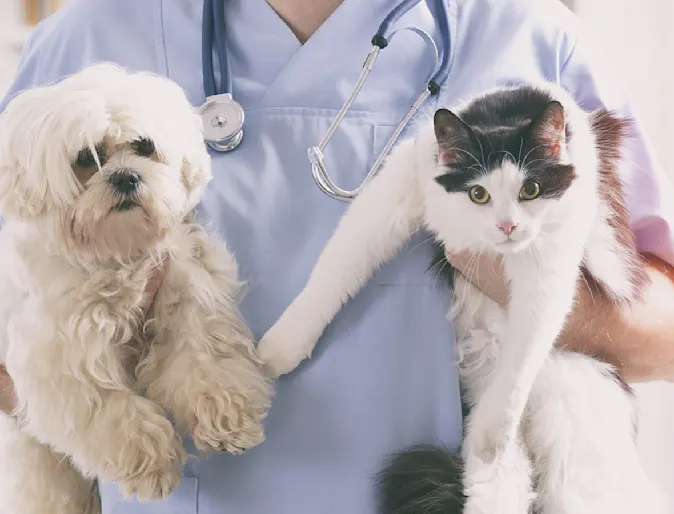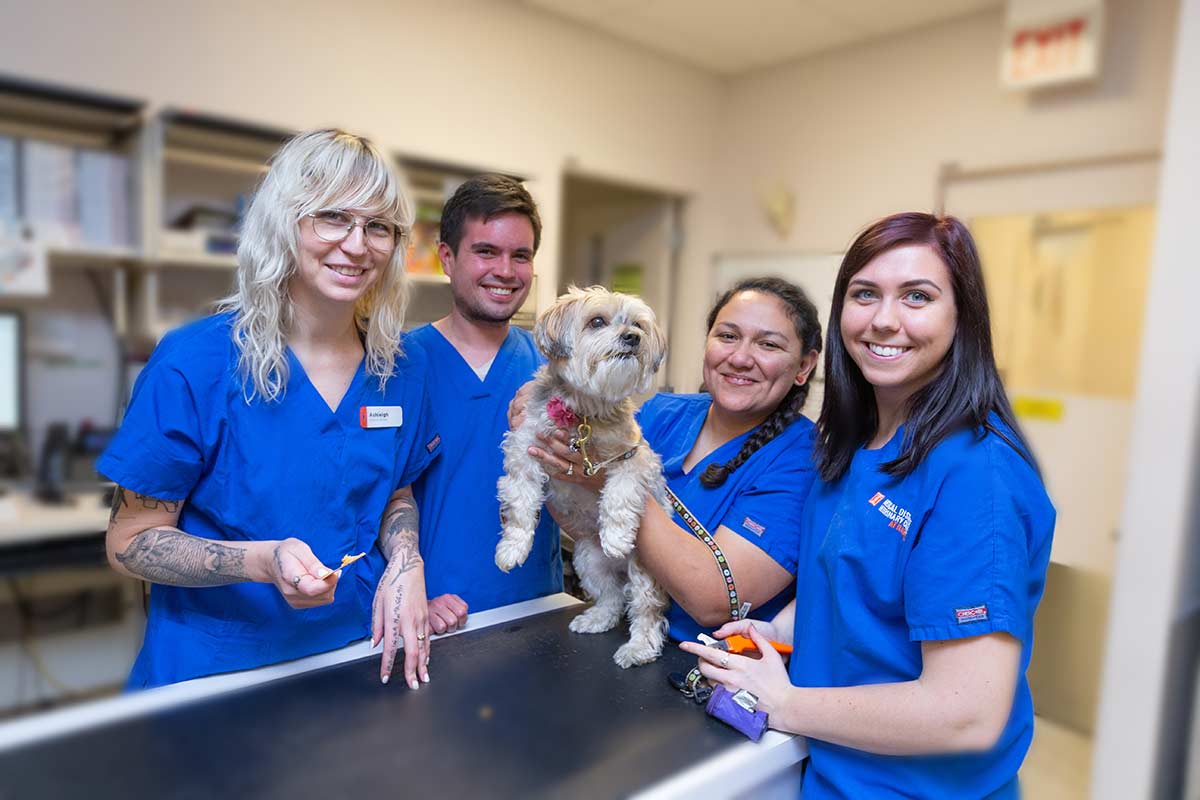What Makes canine tplo surgery a Game-Changer for Active Dogs
What Makes canine tplo surgery a Game-Changer for Active Dogs
Blog Article
Everything About Veterinarian Surgical Treatment: Understanding the Value of Expert Treatment for Your Pet dogs
Vet surgical treatment is an essential element of family pet health care. It encompasses various treatments, from regular optional surgical treatments to urgent treatments. Understanding the complexities of these surgical procedures can aid pet owners make informed decisions. The preparation, execution, and recuperation stages are vital for ensuring the health of pets. With appropriate expertise, proprietors can browse the complexities of vet treatment. What variables should be considered prior to a pet dog undertakes surgical treatment?
Kinds Of Vet Surgeries
When an animal needs medical intervention, comprehending the numerous kinds of vet surgical procedures can help family pet proprietors make informed choices. Vet surgical treatments can be generally classified into three main types: elective, immediate, and emergency situation surgical procedures. Elective surgical treatments, such as spaying or neutering, are prepared procedures that are not quickly dangerous. Urgent surgical procedures, like those for international body elimination, must be performed quickly but are not deadly in the minute. Emergency surgeries, such as those dealing with serious injury or internal bleeding, are important and require instant attention.Additionally, surgeries can vary in complexity, ranging from minimally invasive laparoscopic treatments to much more substantial open surgeries. Each sort of surgery lugs its own risks and recovery processes. Understanding these classifications enables pet dog proprietors to engage in purposeful discussions with veterinarians, leading to far better results for their precious animals.
Getting ready for Your Family pet's Surgical procedure
Planning for a family pet's surgery includes a detailed checklist to ensure all fundamentals are covered. Reliable interaction with the veterinarian is important for comprehending the treatment and any type of required pre-operative actions - veterinary cardiologist near me. Furthermore, having clear post-operative care directions will aid owners provide the very best assistance for their recouping family pets
Pre-Surgery Checklist Essentials
Ensuring a smooth medical experience for an animal calls for cautious prep work and focus to detail. A pre-surgery checklist is crucial for animal proprietors to follow. Verifying the set up surgical procedure day and time is essential. Proprietors should also confirm that their pet dog has not eaten according to the veterinarian's directions, typically for 8-12 hours before surgery. Collecting needed medical records, consisting of inoculation history, is necessary for the veterinarian's evaluation. It is likewise advisable to prepare a comfortable room in the house for the pet's recovery after surgical treatment. Proprietors ought to have a plan for transportation to and from the veterinary facility, making certain that the pet is protected and comfortable throughout the journey. Complying with these steps can significantly enhance the surgical experience.
Communicating With Your Veterinarian

Effective interaction with the vet is essential for an effective medical experience for family pets. Owners must be prepared to discuss their animal's case history, consisting of any pre-existing conditions, medicines, and allergic reactions. This info assists the veterinarian examine dangers and tailor the medical plan appropriately. In addition, pet dog proprietors should ask inquiries relating to the procedure, anesthetic, and anticipated outcomes to guarantee they fully recognize the procedure. Making clear any type of doubts can relieve anxiousness for both the pet and the proprietor. It is also important to connect any type of behavior modifications or concerns observed in the animal leading up to the surgery. Eventually, clear dialogue fosters trust fund and collaboration, guaranteeing that pet dogs receive the most effective possible care throughout their medical journey.
Post-Operative Treatment Instructions
After talking about the surgery with the veterinarian, pet dog owners ought to concentrate on post-operative treatment guidelines to facilitate a smooth recuperation for their pet dogs. These instructions normally consist of keeping an eye on the medical site for signs of infection, such as inflammation or discharge. Pets might require to be maintained calm and constrained to stop extreme movement that can interrupt recovery. Discomfort administration is important, so owners should follow the vet's guidance on carrying out medications. In addition, dietary constraints may be encouraged to avoid stomach distress. Regular follow-up consultations are necessary to guarantee proper healing and attend to any type of worries. By adhering to these post-operative care directions, pet owners can significantly add to their family pet's healing and overall health.
The Surgery Explained
The medical procedure for animals encompasses critical actions that guarantee their safety and recuperation. Pre-surgery preparations are vital for reducing dangers, while post-operative care guidelines play an essential role in promoting healing. Understanding these parts assists pet owners browse the medical experience better.
Pre-Surgery Preparations
Prior to an animal goes through surgery, several important preparations have to take area to guarantee a risk-free and successful procedure. A complete vet evaluation is vital to analyze the family pet's overall wellness and identify any type of prospective risks. This may consist of blood examinations, imaging, or other diagnostics. The vet will additionally review anesthesia choices customized to the family pet's specific requirements. Furthermore, animal owners are typically instructed to withhold food and water for a defined time before surgical treatment to minimize the danger of issues throughout anesthesia. It is essential for owners to offer a complete clinical history, including any medications or allergic reactions, making sure the surgical group has all required details. Appropriate communication and adherence to pre-surgery standards can significantly enhance the end result of the treatment.
Post-Operative Treatment Standards
Proper post-operative care is important for ensuring a pet dog's healing adhering to surgery. After the treatment, pets must be kept an eye on carefully for any type of indicators of complications, such as too much blood loss, swelling, or uncommon habits. It is necessary to follow the vet's guidelines regarding drugs, consisting of painkiller and antibiotics. Animals must be kept in a peaceful, comfortable environment to reduce anxiety and advertise recovery. Limiting activity is crucial; short, leashed strolls may be required, but leaping or running ought to be stayed clear of. Normal follow-up visits ought to be set up to assess the healing procedure. In addition, the medical site should be kept tidy and dry, with any kind of indicators of infection reported to a vet quickly. Sticking to these standards enhances healing outcomes.
Anesthetic and Pain Administration
Effective anesthetic and pain monitoring are important elements of veterinary surgical treatment, making sure that pet dogs remain comfy and safe throughout the treatment. Veterinarians analyze each pet dog's private needs, taking into consideration variables such as age, weight, wellness standing, and the kind of surgical procedure being performed.Anesthesia methods commonly include a mix of pre-anesthetic medications, induction agents, and inhalant anesthetics, enabling precise control over the pet's degree of awareness. Tracking during surgical treatment is critical; veterinarians continually observe essential indicators to resolve any kind of prospective problems promptly.Pain administration methods may involve opioids, non-steroidal anti-inflammatory medications (NSAIDs), and anesthetics, tailored to the pet dog's specific circumstance. This diverse approach helps lessen discomfort and advertises a smoother surgical experience. By prioritizing effective anesthesia and pain management, vet professionals improve the overall welfare of animals undergoing medical treatments, ensuring they receive the highest criterion of care.
Post-Operative Treatment and Healing
Adhering to surgery, the emphasis moves to post-operative care and recuperation, which is essential for making sure a family pet's secure return to regular activities. During this duration, pets need a quiet, comfortable atmosphere to help healing. Owners ought to closely check their pet dogs for any signs of pain or uncommon behavior.Veterinary standards commonly consist of specific instructions associated with drug administration, wound care, and nutritional modifications. It is crucial to abide by these referrals to minimize difficulties and advertise recovery. Animals may need to be limited about veterinary doctor from energetic activities, such as running or leaping, during their healing period (canine tplo surgery).Regular follow-up visits with the veterinarian enable for tracking of the animal's development and prompt changes to the care strategy. Giving emotional support and companionship can likewise boost a family pet's recovery experience, aiding to reduce tension and anxiety. In general, diligent post-operative treatment plays a substantial duty in attaining a successful recuperation
Identifying Difficulties After Surgical Procedure
Exactly how can family pet proprietors determine problems after surgery? Understanding of details indicators is crucial for making sure the wellness of pets throughout recovery. Common signs include excessive swelling, redness, or discharge at the surgical site, which may represent infection. Additionally, relentless discomfort, indicated by whimpering or unwillingness to move, should prompt instant focus. Adjustments in cravings or water consumption can additionally suggest difficulties; a reduction in these actions may signify pain or distress.Moreover, animal owners need to check their pet dogs for any type of unusual behavior, such as sleepiness or problem breathing, as these can be indicators of severe issues. Vomiting or looseness of the bowels following surgical procedure may call for immediate veterinary evaluation. Acknowledging these issues early can significantly impact a pet's recovery process, emphasizing the importance of caution and timely interaction with a veterinarian for any type of worrying signs.
The Function of Veterinary Professionals in Surgical Care
Veterinary professionals play a crucial duty in guaranteeing the security and success of medical procedures for family pets, especially following surgical treatment when keeping track of and care are extremely important. These professionals consist of vets, veterinary technicians, and assistance personnel, all of whom contribute specialized skills to the medical process.Before surgical treatment, veterinarians conduct complete assessments to evaluate the family pet's wellness, making certain that any type of hidden conditions are handled. During the treatment, the surgical group supplies anesthetic, maintains sterilized environments, and monitors crucial signs, all crucial for minimizing risks.Post-operative care is similarly considerable; vet professionals observe for complications, handle discomfort, and overview proprietors on recovery methods. Their knowledge enables them to recognize early indicators of distress or infection, guaranteeing prompt treatment. Eventually, the collaborative efforts of veterinary specialists in surgical care cultivate a safe setting, promoting the wellness of family pets throughout the surgical journey.

Often Asked Inquiries
Just how Do I Choose the Right Vet Cosmetic Surgeon for My Animal?
Choosing the ideal veterinary cosmetic surgeon includes looking into qualifications, checking out reviews, and evaluating the center's environment. It is necessary to review the doctor's experience with you can try this out certain procedures and their communication design when choosing.
What Prevail Misconceptions Regarding Vet Surgeries?
Typical mistaken beliefs about veterinarian surgical procedures consist of ideas that they are always high-risk, unneeded, or for emergencies. Numerous animal proprietors ignore the advantages of preventative procedures and the ability associated with veterinary surgical treatment.
Exactly How Much Will My Pet dog's Surgical procedure Expense?
The price of a family pet's surgical procedure can vary significantly based on elements such as the sort of procedure, the veterinarian's experience, and geographic place (emergency vet near me). Normally, costs range low cost veterinary services from a couple of hundred to numerous thousand dollars

Can My Animal Eat Prior To Surgery?
Prior to surgery, it is usually suggested that pets avoid eating for a certain period. This fasting helps minimize the risk of difficulties during anesthetic. Owners need to consult their veterinarian for precise directions customized to their pet dog's demands.
What happens if My Pet Has Pre-Existing Health Conditions?
When an animal has pre-existing wellness conditions, it's vital for the veterinarian to evaluate these elements before surgical treatment. This assessment guarantees suitable safety measures are taken, decreasing risks and optimizing the animal's general security during the treatment.
Report this page